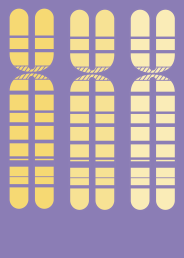Annual Review of Genomics and Human Genetics - Volume 10, 2009
Volume 10, 2009
-
-
Copy Number Variation in Human Health, Disease, and Evolution
Vol. 10 (2009), pp. 451–481More LessCopy number variation (CNV) is a source of genetic diversity in humans. Numerous CNVs are being identified with various genome analysis platforms, including array comparative genomic hybridization (aCGH), single nucleotide polymorphism (SNP) genotyping platforms, and next-generation sequencing. CNV formation occurs by both recombination-based and replication-based mechanisms and de novo locus-specific mutation rates appear much higher for CNVs than for SNPs. By various molecular mechanisms, including gene dosage, gene disruption, gene fusion, position effects, etc., CNVs can cause Mendelian or sporadic traits, or be associated with complex diseases. However, CNV can also represent benign polymorphic variants. CNVs, especially gene duplication and exon shuffling, can be a predominant mechanism driving gene and genome evolution.
-
-
-
The Toxicogenomic Multiverse: Convergent Recruitment of Proteins Into Animal Venoms
Vol. 10 (2009), pp. 483–511More LessThroughout evolution, numerous proteins have been convergently recruited into the venoms of various animals, including centipedes, cephalopods, cone snails, fish, insects (several independent venom systems), platypus, scorpions, shrews, spiders, toxicoferan reptiles (lizards and snakes), and sea anemones. The protein scaffolds utilized convergently have included AVIT/colipase/prokineticin, CAP, chitinase, cystatin, defensins, hyaluronidase, Kunitz, lectin, lipocalin, natriuretic peptide, peptidase S1, phospholipase A2, sphingomyelinase D, and SPRY. Many of these same venom protein types have also been convergently recruited for use in the hematophagous gland secretions of invertebrates (e.g., fleas, leeches, kissing bugs, mosquitoes, and ticks) and vertebrates (e.g., vampire bats). Here, we discuss a number of overarching structural, functional, and evolutionary generalities of the protein families from which these toxins have been frequently recruited and propose a revised and expanded working definition for venom. Given the large number of striking similarities between the protein compositions of conventional venoms and hematophagous secretions, we argue that the latter should also fall under the same definition.
-
-
-
Genetics, Medicine, and the Plain People
Vol. 10 (2009), pp. 513–536More LessThe Old Order Amish and Old Order Mennonite populations of Pennsylvania are descended from Swiss Anabaptist immigrants who came to the New World in the early eighteenth century. Today they live in many small endogamous demes across North America. Genetically, these demes have dissimilar allele frequencies and disease spectra owing to unique founders. Biological and social aspects of Old Order communities make them ideal for studies in population genetics and genomic medicine, and over the last 40 years, advances in genomic science coincided with investigational studies in Plain populations. Newer molecular genetic technologies are sufficiently informative, rapid, and flexible to use in a clinical setting, and we have successfully integrated these tools into a rural pediatric practice. Our studies with the Pennsylvania Plain communities show that population-specific genetic knowledge provides a powerful framework in which to prevent disease, reduce medical costs, and create new insights into human biology.
-
Previous Volumes
-
Volume 24 (2023)
-
Volume 23 (2022)
-
Volume 22 (2021)
-
Volume 21 (2020)
-
Volume 20 (2019)
-
Volume 19 (2018)
-
Volume 18 (2017)
-
Volume 17 (2016)
-
Volume 16 (2015)
-
Volume 15 (2014)
-
Volume 14 (2013)
-
Volume 13 (2012)
-
Volume 12 (2011)
-
Volume 11 (2010)
-
Volume 10 (2009)
-
Volume 9 (2008)
-
Volume 8 (2007)
-
Volume 7 (2006)
-
Volume 6 (2005)
-
Volume 5 (2004)
-
Volume 4 (2003)
-
Volume 3 (2002)
-
Volume 2 (2001)
-
Volume 1 (2000)
-
Volume 0 (1932)

